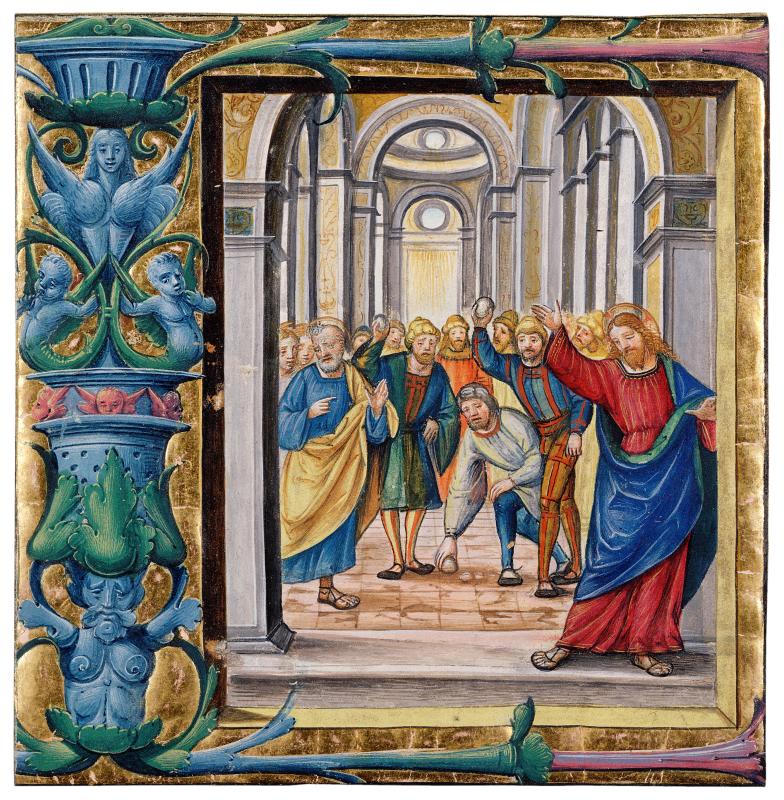
Accession number
MS M.1090
Object title
Antiphonary single leaf (MS M.1090).
Created
Milan, Italy, ca. 1500.
Credit line
Purchased in 1995.
Description
1 leaf (4-line staves), matted : vellum, ill. ; 172 x 168 mm
Provenance
Olivetan monastery of SS. Michele e Niccolò at Villanova-Sillaro (near Lodi); Abate Luigi Celotti (sold Christie's London, 26 May 1825, lot 15); Mrs. John B. Northrop, Cold Spring Harbor, NY; purchased from Mrs. Northrop on the Acquistions Fund 31 May 1995.
Notes
Ms. antiphonary single leaf (cutting); written and illuminated in Italy, probably Milan, ca. 1500.
Decoration: 1 historiated initial I(ste sunt dies) for the first Matins response for Passion Sunday, depicting Christ about to be stoned by townsmen at the threshold of a synagogue; Italian Renaissance style.
Text: on verso: Die si vocem Domini Nolite o; the historiated initial I(ste sunt dies) opens the first Matins response for Passion Sunday.
M.1090, cut from an antiphonary and M.725, cut from a gradual, probably come from the same set of choir books commissioned for the Olivetan monastery of SS Michele e Niccolò at Vilanova-Silaro (near Lodi).
Musical notation: 4-line red staves, square notes.
Artist: Master B. F., sometimes identified as Francesco Binasco.
Decoration: 1 historiated initial I(ste sunt dies) for the first Matins response for Passion Sunday, depicting Christ about to be stoned by townsmen at the threshold of a synagogue; Italian Renaissance style.
Text: on verso: Die si vocem Domini Nolite o; the historiated initial I(ste sunt dies) opens the first Matins response for Passion Sunday.
M.1090, cut from an antiphonary and M.725, cut from a gradual, probably come from the same set of choir books commissioned for the Olivetan monastery of SS Michele e Niccolò at Vilanova-Silaro (near Lodi).
Musical notation: 4-line red staves, square notes.
Artist: Master B. F., sometimes identified as Francesco Binasco.
Script
textura
Language
Latin
Resources
Century
Catalog link
Classification
Department
Display Date
ca. 1500.
